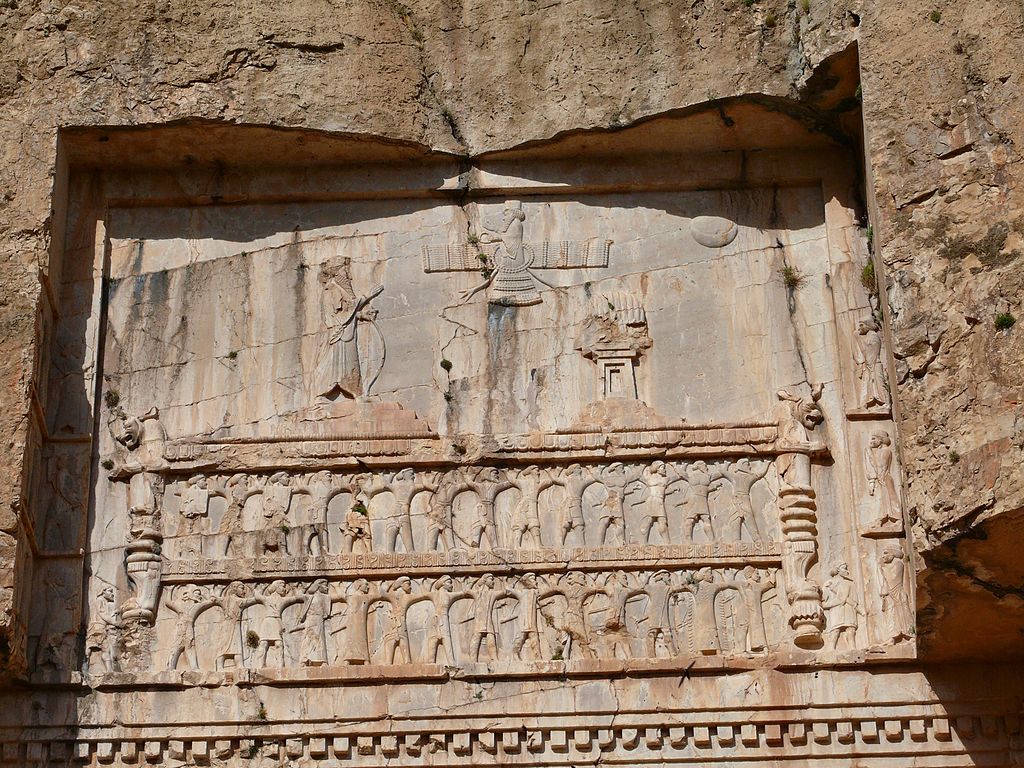
Part 1: Introduction | Part 2: We’ll See Who’s Boss
As we noted last time, the feast at which Queen Vashti refused to appear may have been Xerxes’ effort to get the backing of his nobles for his planned invasion of Greece; the timing works out nicely.
We know how the Persian invasion of Greece went. First there was a problem crossing the Hellespont; a storm destroyed the Persian bridge, and Xerxes had the water scourged just to teach it a lesson. Then a confederation of Greeks bottled the Persian army up at the pass at Thermopylae—though only temporarily. After Xerxes conquered Athens, however, the Greeks decisively defeated the Persian fleet at Salamis, leading Xerxes to head for home. The campaign had taken 3 years.
Back in Susa, Xerxes sought comfort in his harem. It would make sense for the elevation of Esther to take place at this time.
Xerxes cannot restore Vashti (Es 2.1), because the law is irreversible. But his advisers want Xerxes happy, so they devise a plan certain to be appealing to a lecher. He would select a queen not from his existing harem, or even from the families of the council of 7, as tradition dictated, but from all the virgins in the empire (Es 2.2-4). Josephus (Antiquities 11.6.2), whose historical reliability is … uneven, reports that about 400 young women were collected. One commentator notes, “Though this sounds like a beauty contest, it was not a very happy assignment for most of the women. They were uprooted from their communities, which implied confinement to the king’s harem, and moved to what would actually be perpetual widowhood.”
Such are the ways of ancient Near Eastern potentates.
And now (Es 2.5) we meet Mordecai. He’s a Jew, specifically a Benjamite, whose exiled great-grandfather was named Kish, likely for the father of the Benjamites’ favorite son, King Saul (1Ch 9.39). As I commented in the first post of this series, the name Mordecai appears to be derived from the name of the Babylonian god Marduk. This doesn’t necessarily mean that Mordecai’s parents had adopted pagan ways; it may simply have been a common name in that culture, or his parents may have known and admired another man with the name. We know that there was another man named Mordecai in the first return (Ezra 2.2; Ne 7.7)—and we suspect that those returnees were likely to be devout Jews. Another possibility is that Mordecai himself, like Daniel before him (Da 1.7), may have had a second, Babylonian name given to him by the king or someone else in the court. Interestingly, there is a record of a court official about this time named “Marduka,” who would have good reason to be in regular presence at the gate outside the court.
At any rate, Mordecai is raising his younger cousin, Esther, whose parents have died (Es 2.7). (Note that Esther has two names as well.) Esther, being in the top percentile for attractiveness, is swept up in the empire-wide collection for the king’s harem (Es 2.8).
Some have questioned whether Esther should have cooperated in such an arrangement. I’ll note, first, that she really didn’t have a choice. Second, polygamy was not viewed in that culture with the horror we see in it today; Esther, like everyone else who has ever lived, is a creature of her time. And third, the question is moot; the point of the story is not that everything Esther or Mordecai did was right and virtuous. I’ll get to the point eventually—see the title of the series—but I’ll just say for now that in terms of the story, it really doesn’t matter whether what she did was right or not.
And so Esther joins the harem of the most powerful man in the world. Unlike Daniel (Da 1.8), she apparently eats whatever food is set before her (Es 2.9)—with the result that her Jewish identity remains under wraps. And that will become a key part of the story.
As we shall see.
Part 4: The King Gets What He Wants | Part 5: A Roll of the Dice | Part 6: The Tease | Part 7: Any Old Tablet | Part 8: Mental Explosion | Part 9: What Goes Around | Part 10: The Missing Piece
Photo credit: Xerxes tomb at Naqsh-e Rostam (4615488322) – Tomb of Xerxes I – Wikipedia



